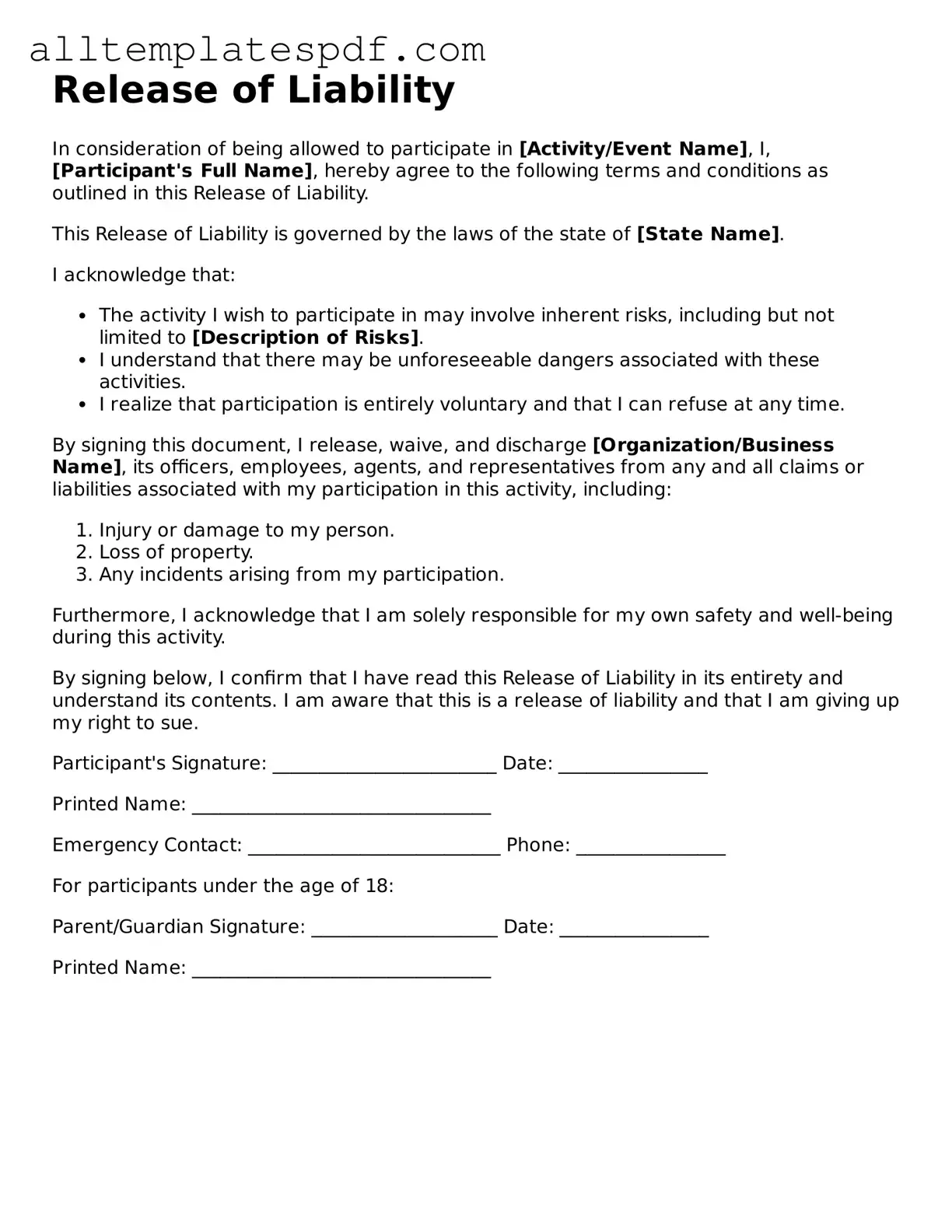Filling out a Release of Liability form may seem straightforward, but many people make common mistakes that can have serious consequences. One frequent error is failing to read the entire document carefully. It’s easy to skim through the text, especially when it’s filled with legal language. However, each section is important, and missing a detail can lead to misunderstandings about what rights you are waiving.
Another common mistake is neglecting to provide accurate personal information. When individuals fill out their names, addresses, or contact information incorrectly, it can create confusion later on. This is particularly problematic if a dispute arises and the parties need to reach each other. A simple typo can complicate matters significantly.
People often forget to date the form. While it might seem trivial, the date serves as a crucial reference point. It indicates when the release was signed and can affect the enforceability of the document. Without a date, the validity of the release may be questioned, leading to potential legal issues down the line.
Some individuals may also overlook the importance of understanding the scope of the release. A Release of Liability typically covers specific activities or risks. If someone signs the form without fully grasping what they are agreeing to, they might unknowingly waive their rights in situations they didn’t intend to. Clarity is key; if you have questions, it’s essential to seek answers before signing.
Lastly, failing to consult with a legal professional can be a significant misstep. While many people believe they can handle these forms on their own, the nuances can be complex. Legal advice can provide valuable insights and ensure that you are fully aware of the implications of what you are signing. Seeking guidance can save you from potential pitfalls and help you make informed decisions.
